The Sony DSC-R1 is an interesting camera for quite
a few reasons:
- Works like a larger digicam
- Has an 10 MP APS sized CMOS sensor
- Features a Zeiss zoom with an equivalent range of 24-120mm in 35mm
terms and f/2.8-4.3
- Price below $1000.
When we reviewed the smaller brother the Sony F828 we were not really
impressed:
- Image quality (the infamous purple fringing, probably a problem
of the lens and sensor)
- The EVF was not really up to our taste
- Poor RAW support (large files and very slow handling with RAW)
Because we find this a very important camera we bought a Sony R1 as
we did not yet receive a review sample from Sony in time. Some first observations:
- We find the range of the zoom with 24-120mm (135 equivalent) very
useful. Restricting the zoom range allows to build better lenses.
- We expect the R1 to behave much better in terms of image quality
because the APS sized sensor (about the same size as used in the
Canon 20D
and not a lot smaller than used in the Nikon DSLRs). For such
a sized sensor 10MP makes sense but the 8MP were overkill
for the small digicam sensors.
- Don't expect us to fall in love with the R1 EVF. But in some way
it feels better than the one from the F828 and the manual focus
is
quite well implemented.
- The RAW support is as poorly implemented as with the F828. Sony
does not use any compression to store the RAW files (20MB for the
RAW
file and the R1 also always stores a JPG). The R1 is also not buffering
more than
2 RAWs at a time. For the R1 this is even more disappointing
as we want and will use RAW to get the maximum image quality from
the
R1. For us this is a signal that Sony does not take RAW really serious
because we think can do better if they want. We still hope this will
change over time. Maybe also a good chance to use DNG for the next
cameras.
- The autofocus does not supply us with the same solid feedback as
e.g. a Canon 350D and does not lock in as fast. Time will tell how
well
it works for us.
- As with the F828 we love the live histogram for best exposure.
The R1 also features an easily visible "Zebra" pattern to show potentially
overexposed areas. The handling of these areas seems a bit too conservative
but is still helpful. We would like to see with the live histogram
3 indicators that show the clipping of individual channels. Showing
all 3 color channels in the live histogram would either take up too
much space in the finder or could be confusing.
- After the shot the R1 can show 4 histograms (3 channels +
luminosity). Very well done (like with the Nikon D2x, unfortunately
the new Canon 5D shows only either the 3 channels or the luminosity
histogram).
- We find the camera handles very well. We like cameras that are
not too tiny and are still compact.
- We would like to see an external battery charger as part of the
package. Charging in camera is not that practical.
- The LCD on top of the camera feels nice because it is not in your
way while using the viewfinder. Makes also a nice control center
on top the tripod.
- For the use on the tripod we would like to have a setting with
less than 10 seconds for the self timer.
- The R1 has an auto mode that activates automatically the viewfinder
or the LCD. We were able to fool it sometimes.
- The R1 supports shutter speed and f-stops in 1/3 increments. Unfortunately
ISO is only supported in full f-stops (160/200/400/800/1600/3200).
Sony's RAW converter: Image Data Converter SR V1.0
We spent a few minutes with this tool. Life is too short to wait for
this tool to react to changes. We plan to use Adobe Camera Raw 3.3
(which has preliminary support) or Pixmantec RSP once it supports the
R1.
This does not mean that you may not get good results if you are patient
enough to use the Image Data Converter. Many of the manufacturer's
RAW converters (Nikon and Canon are exceptions) are not really designed
to be used in a workflow with many images.
12/9/2005 Some Los Gatos test shots
We use the beta of Camera Raw 3.3 with preliminary
R1 support.

Ristorante @ISO 200
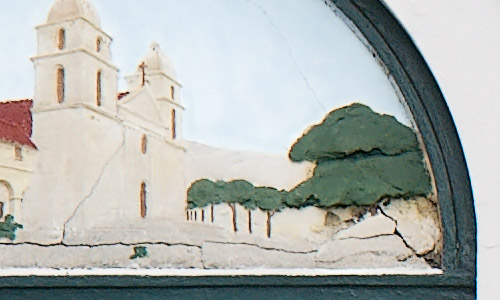
Crop @100% magnification
Colors are nice (most of the time we
have sun light during this test and this time overcast). The details
are not quite at the level we like but we are used to Pixmatec RSP
that certainly gets more detail than other converters. But we also
did not use the self timer and this could have introduced some shake.
If we would have used the 10 second self timer we would needed to take
many pictures because in 10 seconds many cars could have been in our
way. Overall we think the picture is very useable. We start to like
the R1.
You can download the RAW and JPG from
here (>20MB). Note:
Remember that the service we provide is financed by selling our ebooks and PS
tools. 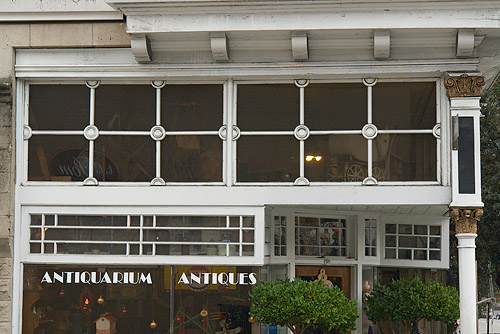
Antique store @ ISO 400
With other cameras and lenses we often
see strong distortions with this scene. The Zeiss lens did very well.
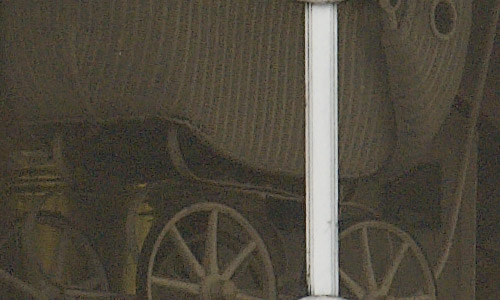
@ 100% magnification (no noise removal)
The noise level at 400 ISO is quite acceptable.
If you want less noise just use a noise filter like Noise Ninja.
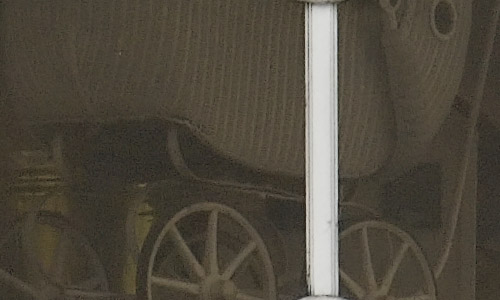
Mild noise correction with Noise Ninja
Also in this test the R1 behaves quite
well. ISO Test
We use the beta of Camera Raw 3.3 with
preliminary R1 support and then sharpened
with the same (strong) level of EasyS
Sharpening Toolkit. No noise removal in ACR 3.3.
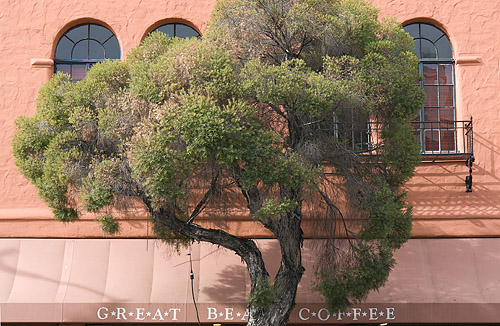
Bear Coffee Shop
Sony DSC-R1
|
| |
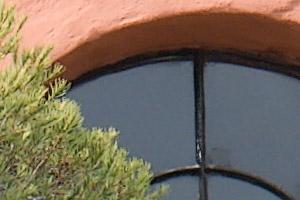 ISO
200 |
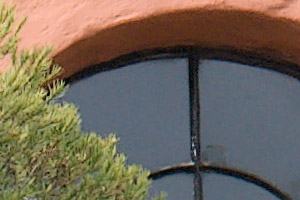
ISO 400 |
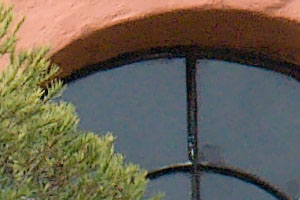
ISO 800 |
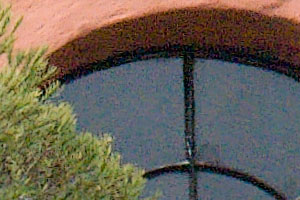 |
ISO 1600
|
|
|
The lowest ISO level for the R1 is 160. Because this is close enough
to ISO 200 we skipped this test. ISO 200 is very good, ISO 400 not
bad, ISO 800 can be used still for good images. We would try to avoid
to use ISO 1600 and higher although with tools like Noise Ninja you
may get still nice photos. Overall the R1 does not disappoint at all
in our noise test.
12/10/2005 Note on Image Stabilization
Some people may think that missing image stabilization is not a
real problem with the R1 24-120mm zoom. We beg to differ:
- The range 70-120 can make a lot of use from image stabilization
- The R1 invites to be used handheld and here image stabilization
can give a 1-2 f-stop advantage
- If you use the 1.7 tele adapter lens (we get one next week) the
focal range gets up to 204mm and here image stabilization is even
much
more needed.
We hope that Sony may get access to the Minolta anti-shake technology
and use it in future cameras (Sony and Konica-Minolta
announced a partnership) . All main players in the camera market
need an anti shake
option either in their lenses or at the sensor level.
12/14/2005 Sony 1.7x
Tele Extender Lens
The 1.7x tele extender is quite a monster:
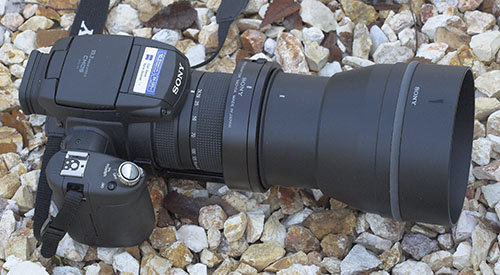
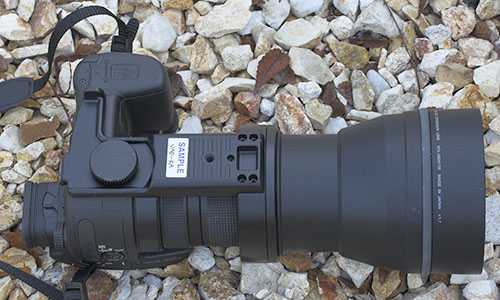
We have no real impression about the
image quality but just feel it hat way too many quirks:
- Heavy and big (a Canon 350D with 70-200mm is way more compact)
- Needs an adapter mounted and then you can't put on the lens hood
for the normal lens (means adding and removing the extender is
way too tedious)
- Can only use the zoom from about 100-120mm. Otherwise you get
vignetting like this:
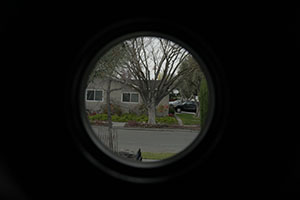
at 24mm :-)
- With a lens of this focal length you want image stabilization
because the R1 can get noisy at even 400 ISO
|